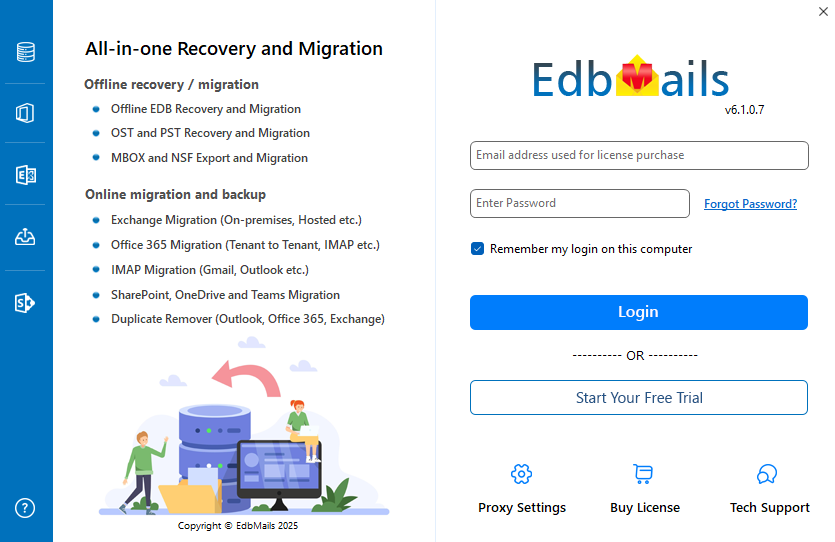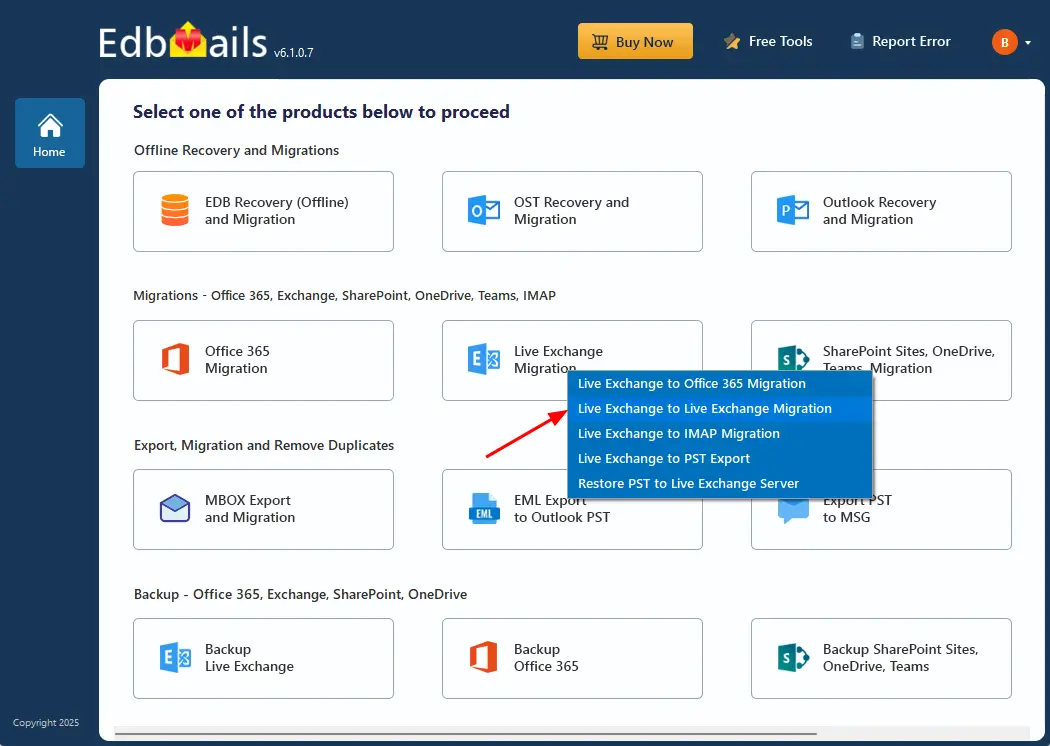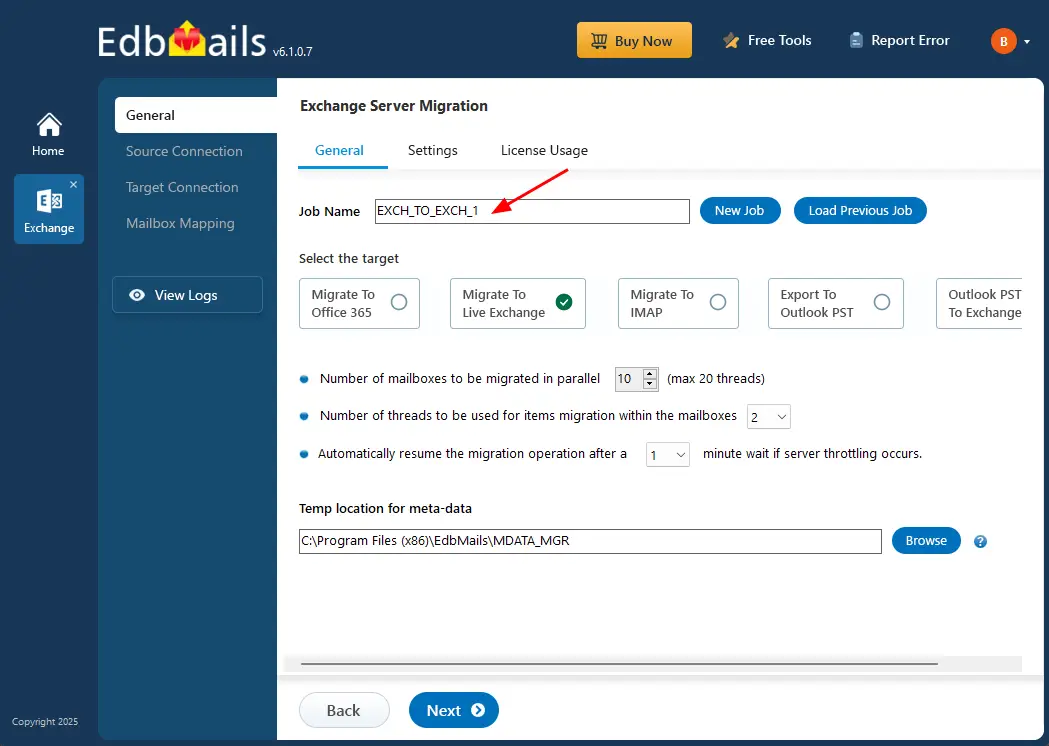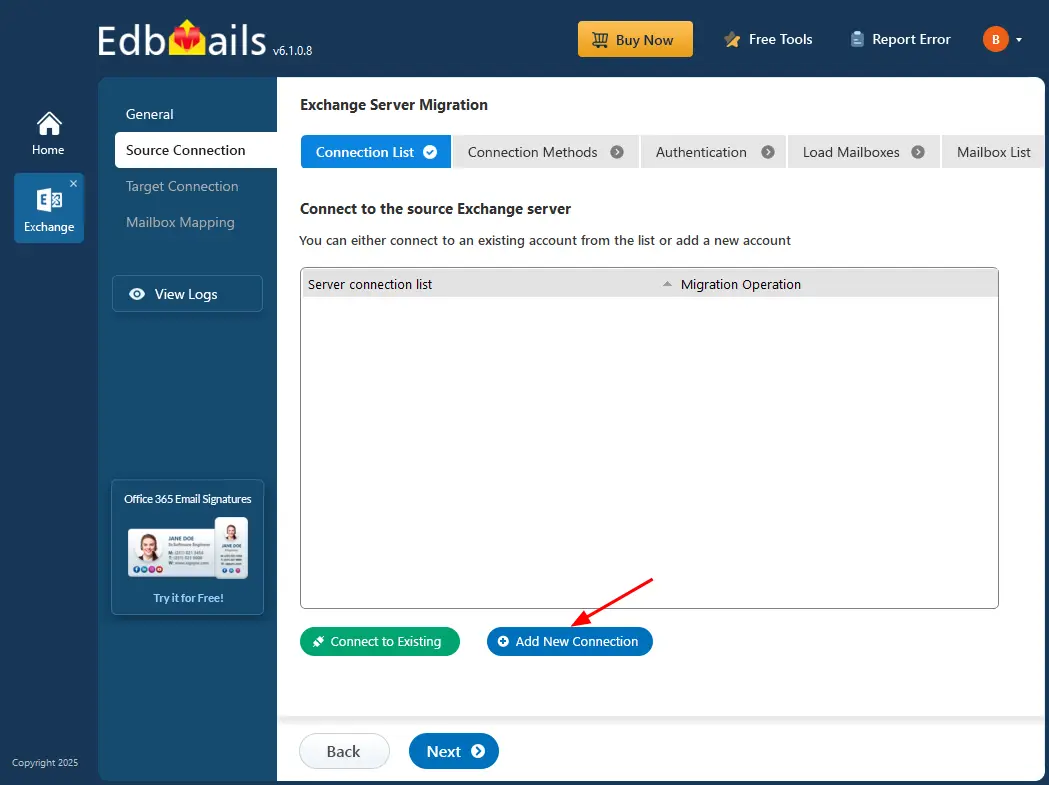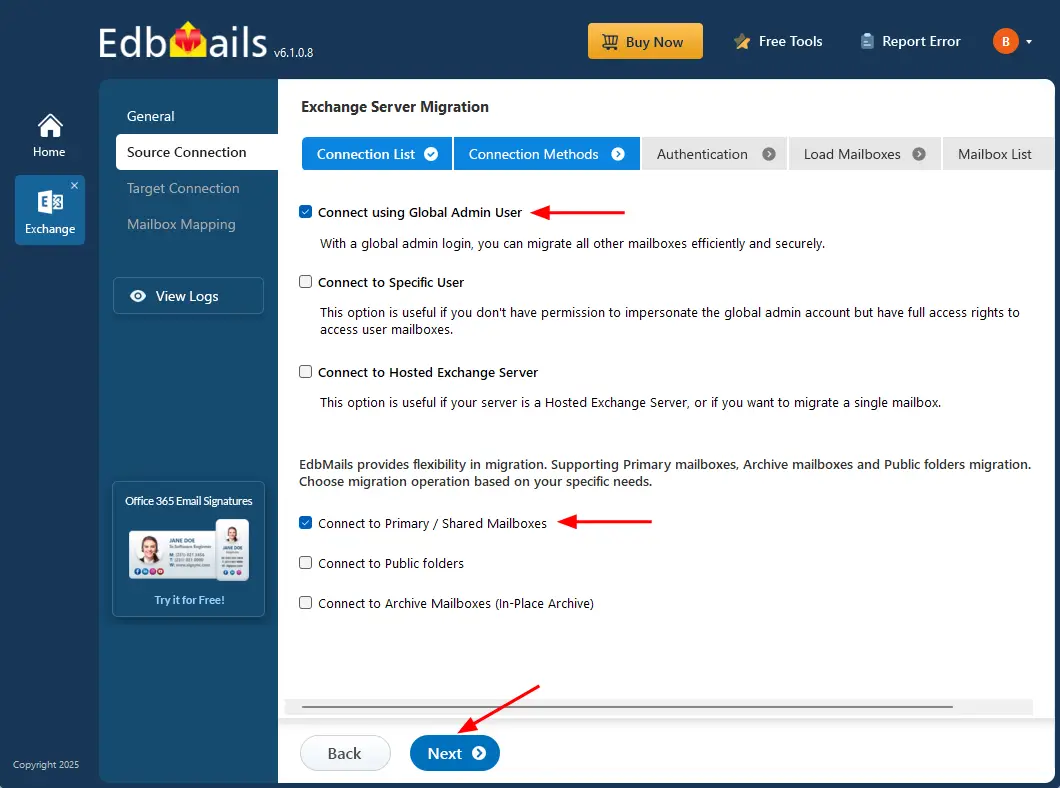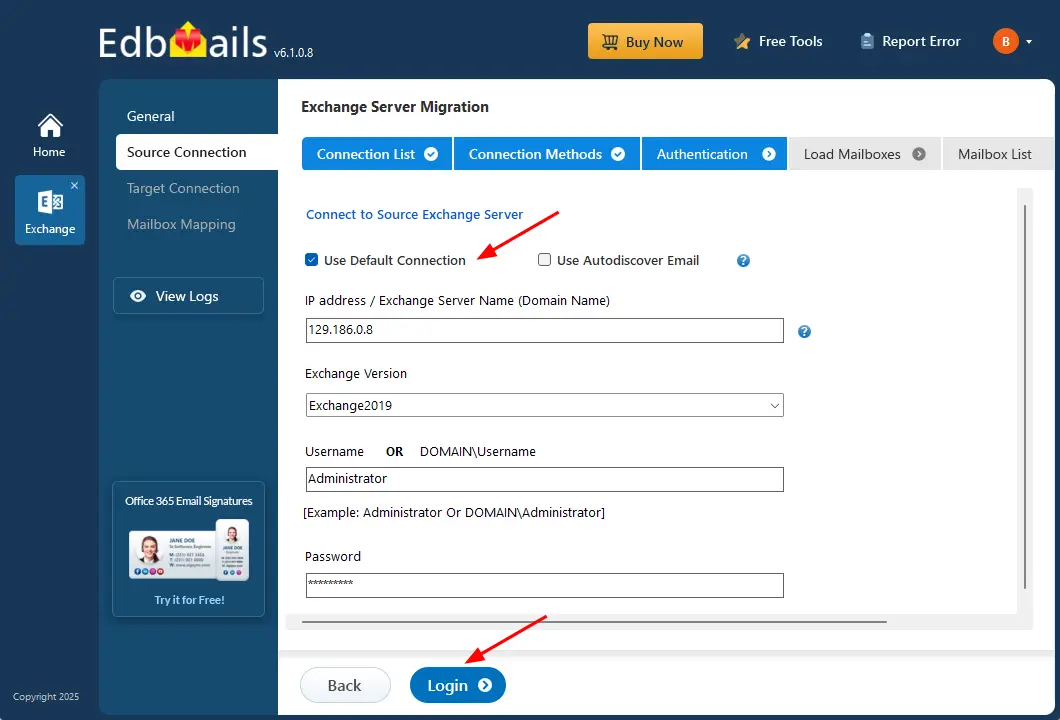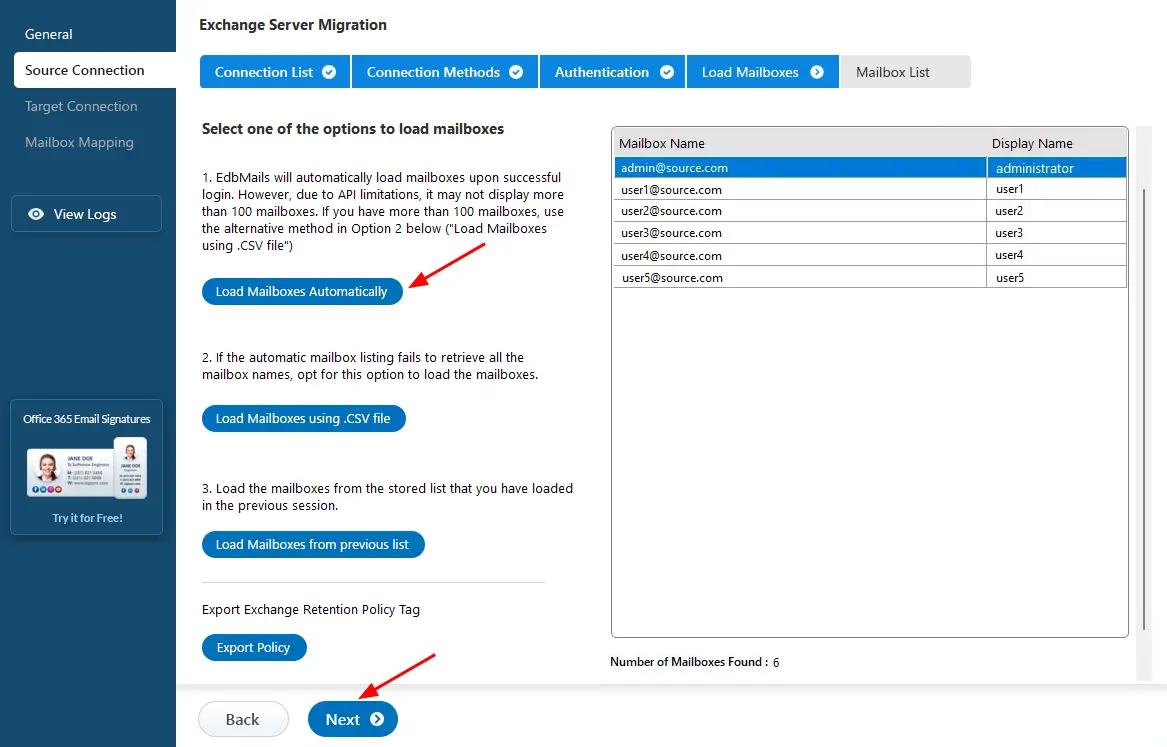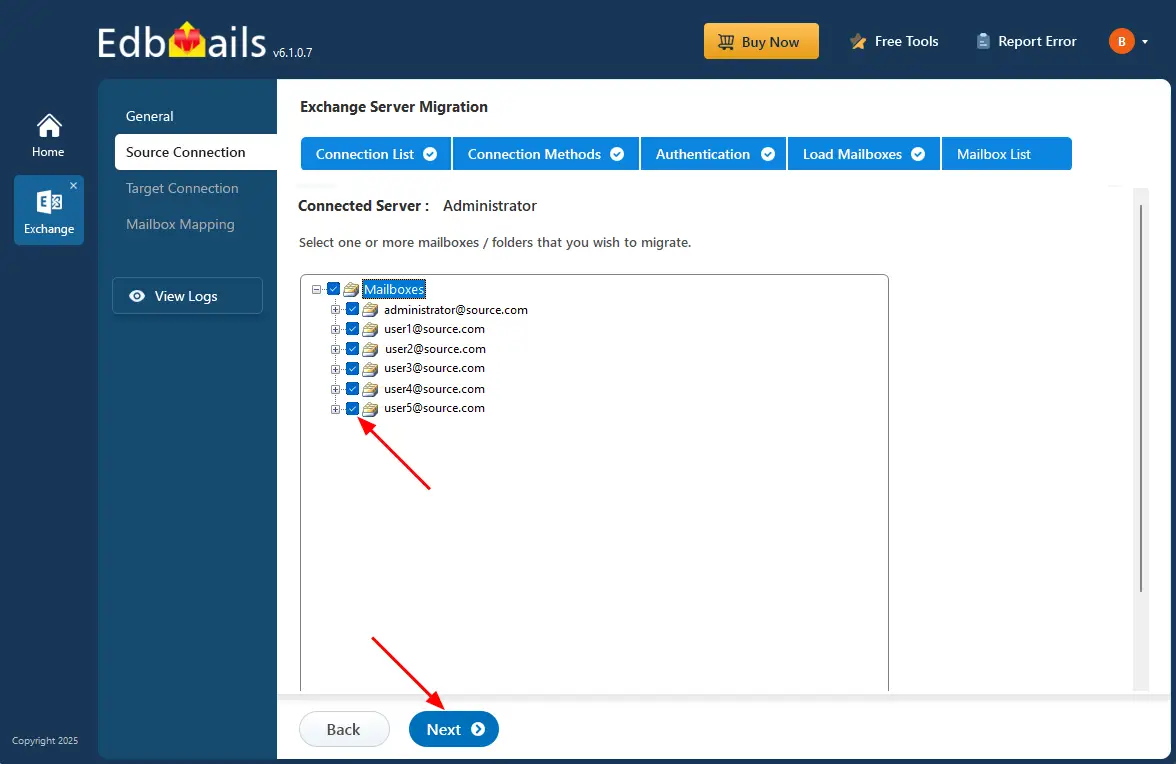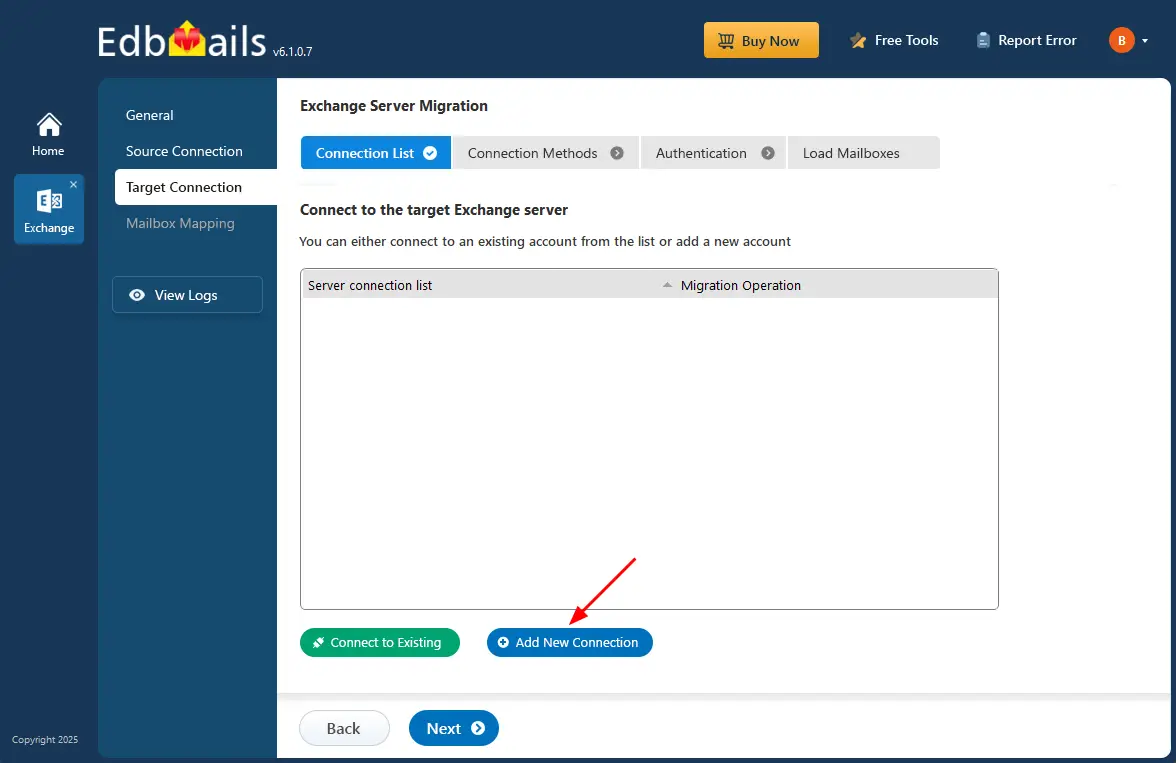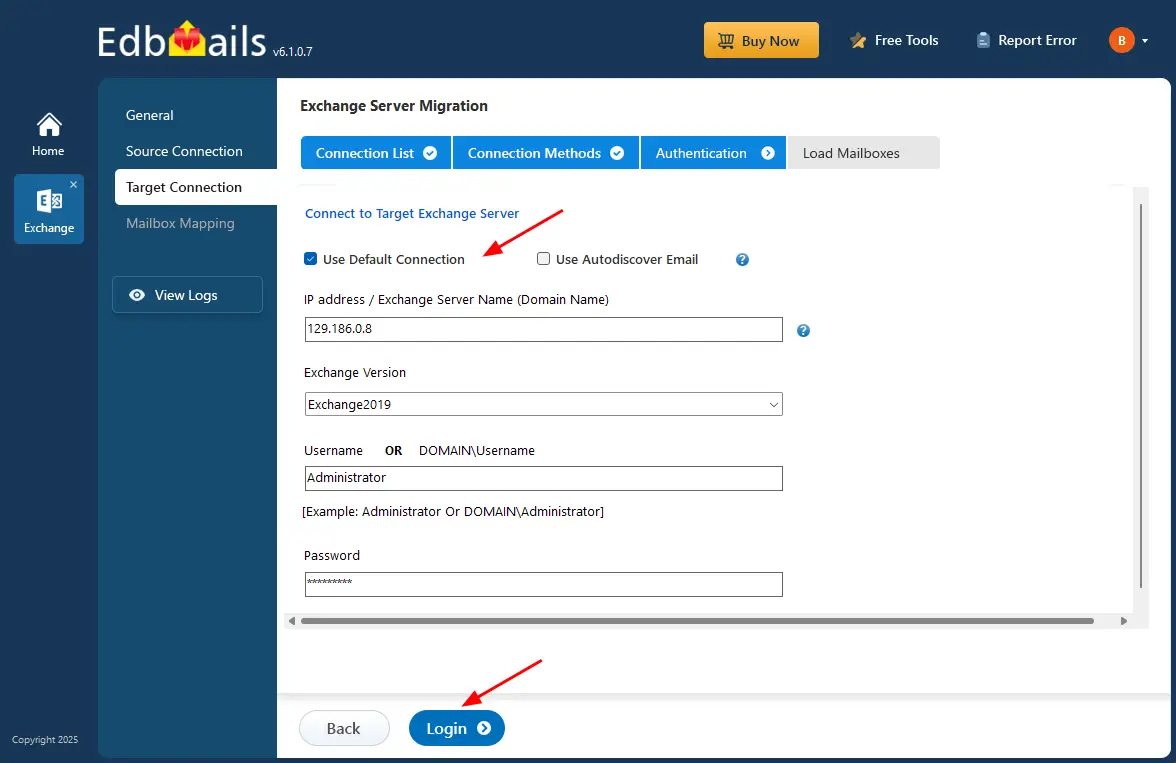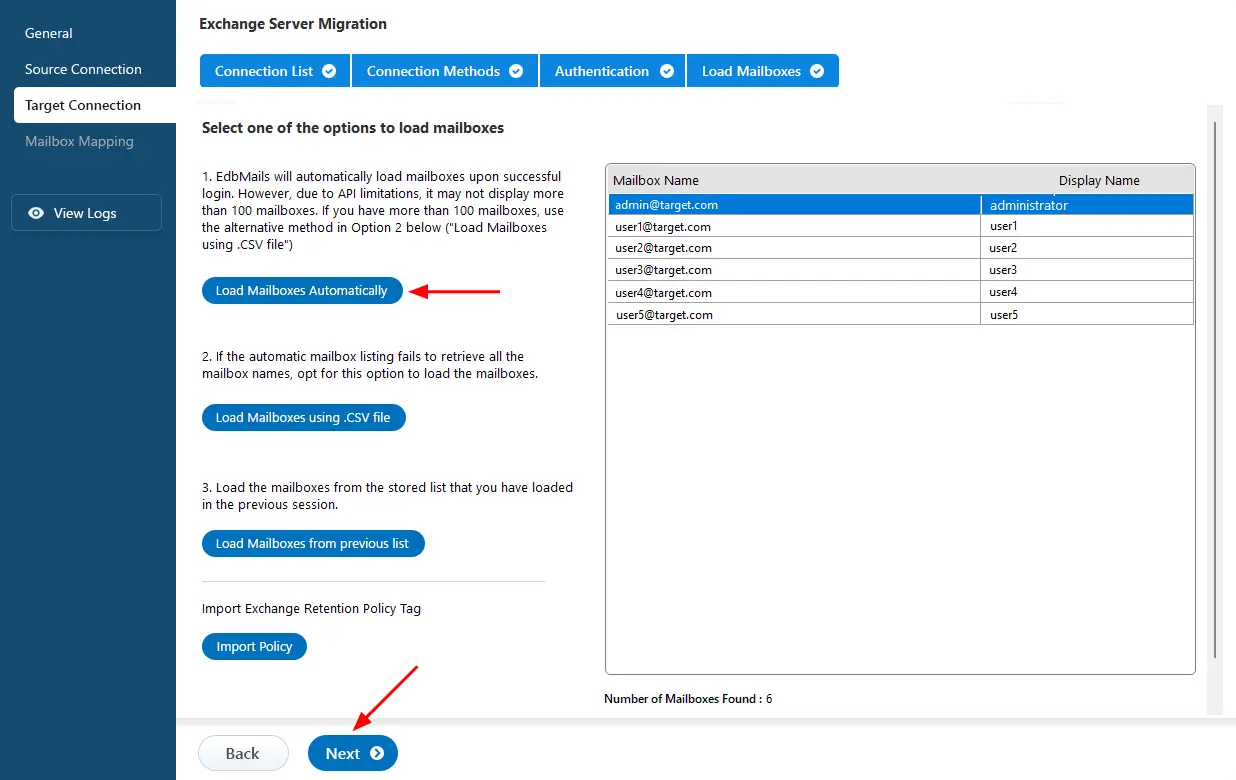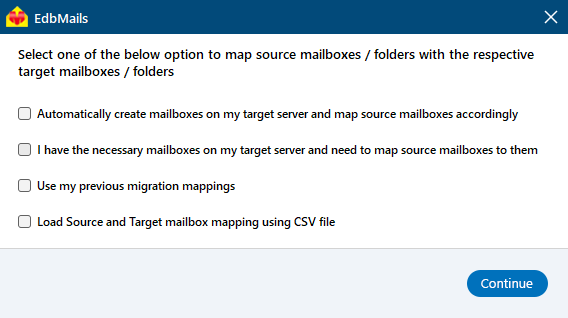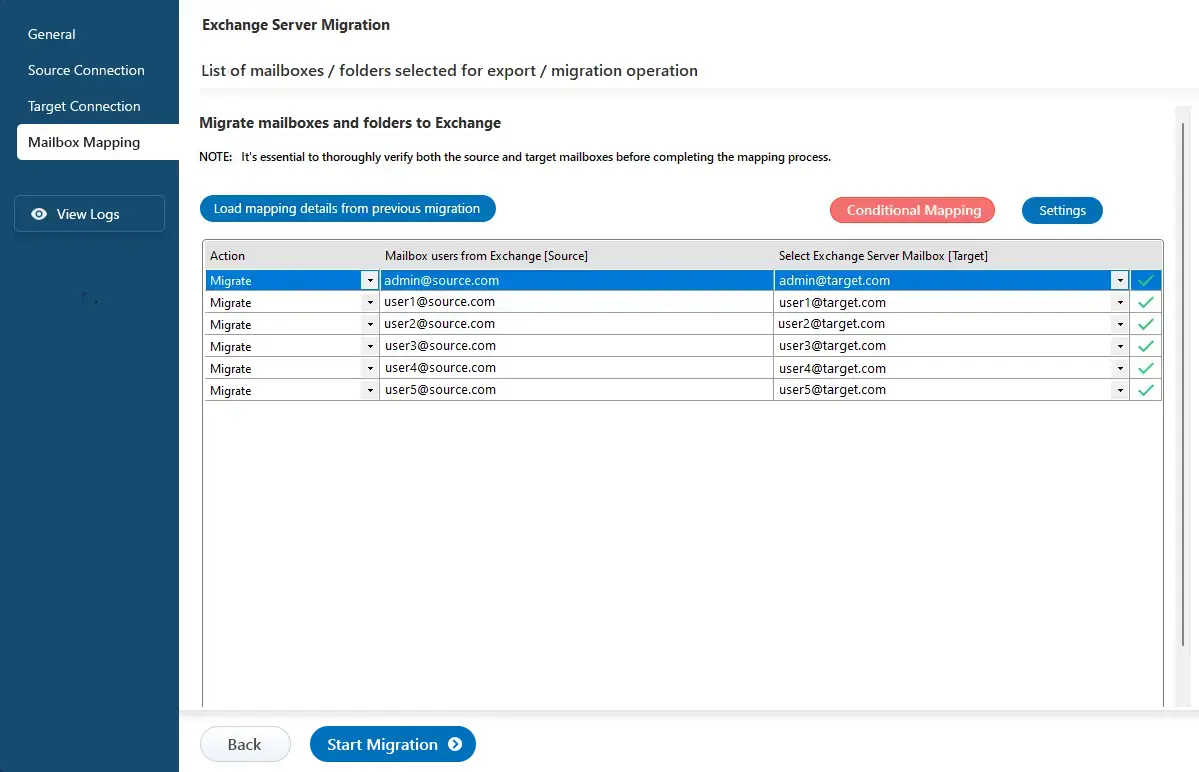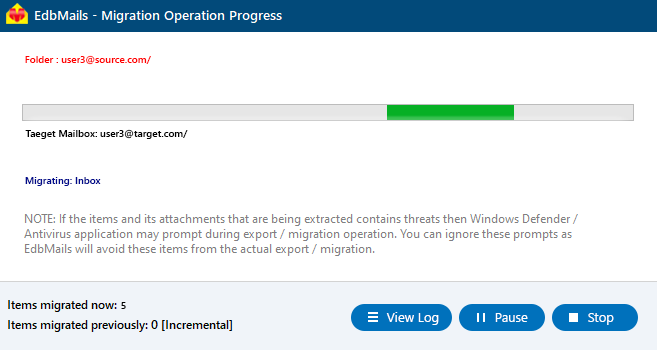Cutover Exchange migration
Cutover migration is a method for migrating an entire on-premises Exchange server environment in a single operation. This type of migration is used when all mailbox data needs to be migrated simultaneously, rather than in stages. It is typically necessary when an organization plans to transition its entire workforce in a single phase, making it suitable for small to medium-sized enterprises (SMEs) that have manageable data volumes and want to avoid prolonged migration timelines.
A cutover migration is often chosen when there is a need to decommission the on-premises Exchange server completely or when rapid migration is required to avoid long-term coexistence between environments.
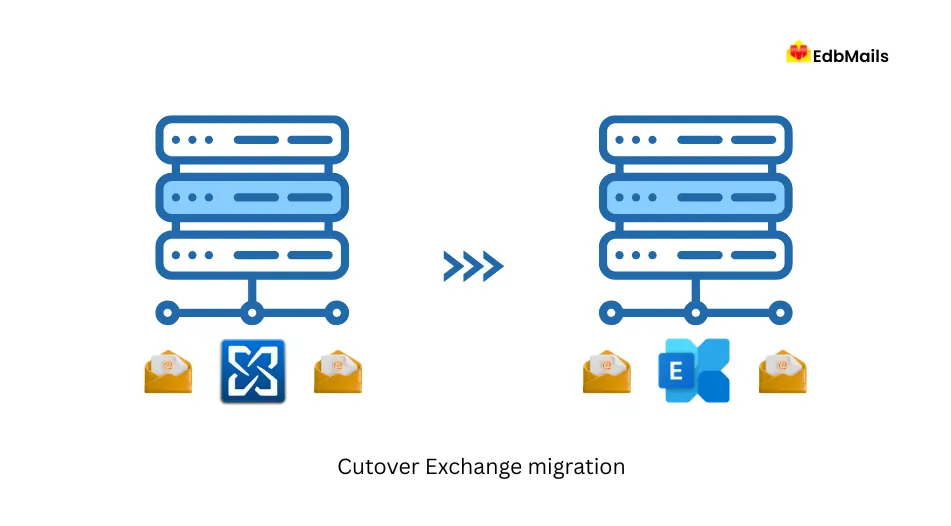
With EdbMails Exchange Migration software, users can migrate data from Exchange 2007, 2010, 2013, 2016, or 2019 directly to Office 365 with minimal configuration. The software is designed to migrate complete mailboxes, public folders, archive mailboxes, and shared mailboxes, ensuring a seamless and complete data transfer.
EdbMails simplifies the entire process, reduces downtime, and ensures that end users can start working in Office 365 without disruption. By combining speed, reliability, and ease of use, EdbMails makes cutover migration an efficient choice for businesses that need a smooth, all-at-once move to the cloud.
Strategic Scenarios for Exchange Cutover Migration
EdbMails makes cutover migration straightforward by enabling users to select the mailboxes for migration and proceed with default settings, unless specific data types need to be excluded. This simplicity makes it an excellent choice in the following scenarios:
- Decommissioning on-premises servers: When an organization plans to completely retire its on-premises Exchange environment and transition all data in a single step.
- Small to medium data volume: For SMEs with a manageable number of mailboxes and data size, cutover migration provides a quick and efficient transition without requiring a complex staged approach.
- Minimizing complexity: Ideal for businesses seeking a low-maintenance migration that demands minimal technical effort, especially when dedicated IT teams are unavailable to manage phased or long-running projects.
Steps to perform Exchange cutover migration using EdbMails
Step 1: Install EdbMails Exchange migration software
- Download and install EdbMails on a Windows computer to get started with the migration process.
- Launch the application and click either ‘Login’ using the appropriate details or ‘Start Your Free Trial’.
See the detailed list of EdbMails system requirements for Exchange migration.
Step 2: Select ‘Live Exchange migration’ as migration option
- Select the ‘Live Exchange Migration’ option from the products lists.
- Choose the option 'Live Exchange to Live Exchange Migration' from the dropdown list and proceed
- You can use the default job name or click 'New Job' to give it a different name.
Step 3: Connect to source Exchange server
- To set up a new connection with the source Exchange server, click ‘Add New Connection’. If you've connected before, just select it from the list and click ‘Connect to Existing’ to continue.
Set impersonation rights on both source and the target servers.
Click here for the details about different Exchange server connection methods supported by EdbMails.
With EdbMails, you can migrate mailboxes, public folders, and archive mailboxes from the source Exchange to the target server.
Choose the required connection methods and click ‘Next’ to continue.
- Enter the source Exchange server details and click the ‘Login’ button.
Tip: EdbMails supports ‘Default Connection’ where you specify the Exchange server name and Exchange version, or the ‘Autodiscover Email' option where you directly login with the user credentials.
- Once you successfully logged into your source server, choose the option to load the mailboxes. EdbMails can automatically load the mailboxes. Alternatively, you can manually load the mailboxes using a CSV file.
- To set up a new connection with the source Exchange server, click ‘Add New Connection’. If you've connected before, just select it from the list and click ‘Connect to Existing’ to continue.
Step 4: Select the mailboxes for migration
- Select the mailboxes from the source Exchange server that you want to migrate
- Click ‘Next’ and proceed to set up the connection with the target server.
Tip: If this is the first time you’re migrating with EdbMails, the migration is a full migration. On subsequent migrations from the same source to the target, the migration is incremental. If you have duplicate emails in your source server, you can remove them with the Exchange Duplicate remover tool before the migration.
Step 5: Connect to target Exchange server
- To connect to the target Exchange server, click ‘Add New Connection’. If you’ve used a connection before, select it from the list and click ‘Connect to Existing’.
- Choose the options to connect to your target Exchange server and click ‘Next’.
- Choose the required options to connect to your target Exchange server and click the ‘Next’ button.
- Enter the target Exchange server details and click the ‘Login’ button.
- Select one of the methods to load the mailboxes.
Step 6: Map the source and target Exchange server mailboxes
- Select the required mapping option.
- If you have installed EdbMails on your Exchange server, you can choose to automatically create mailboxes on the target Exchange server.
Click here to know more about automatic mailbox creation.
- EdbMails automatically maps mailboxes between the source and the target Exchange servers. This functionality proves especially helpful when migrating a significant number of mailboxes, ultimately saving you time in the process.
Step 7: Start Exchange cutover migration
- Once mailbox mapping is done, click ‘Start Migration’ to begin the process.
- After starting the migration, you can track its progress in the progress bar. When it’s finished, EdbMails will ask you to check the migration status and view the logs.
Post-migration activities
- Step 1: Update MX and Autodiscover records
To ensure that emails are delivered to the new Exchange server, update the DNS records known as MX records to point to the migrated server. Additionally, configure the Autodiscover record so Outlook and other email clients can automatically connect to the migrated mailboxes.
- Step 2: Create new Outlook profiles for users
If Outlook has trouble connecting to the new server, create or configure the Outlook profile for each user in the domain. This ensures seamless access to emails, calendars, and contacts.
- Step 3: Decommission and uninstall the source Exchange server
Once the migration is complete and all data is verified, uninstall and decommission the old Exchange server to free up resources and avoid conflicts.
- Step 1: Update MX and Autodiscover records

